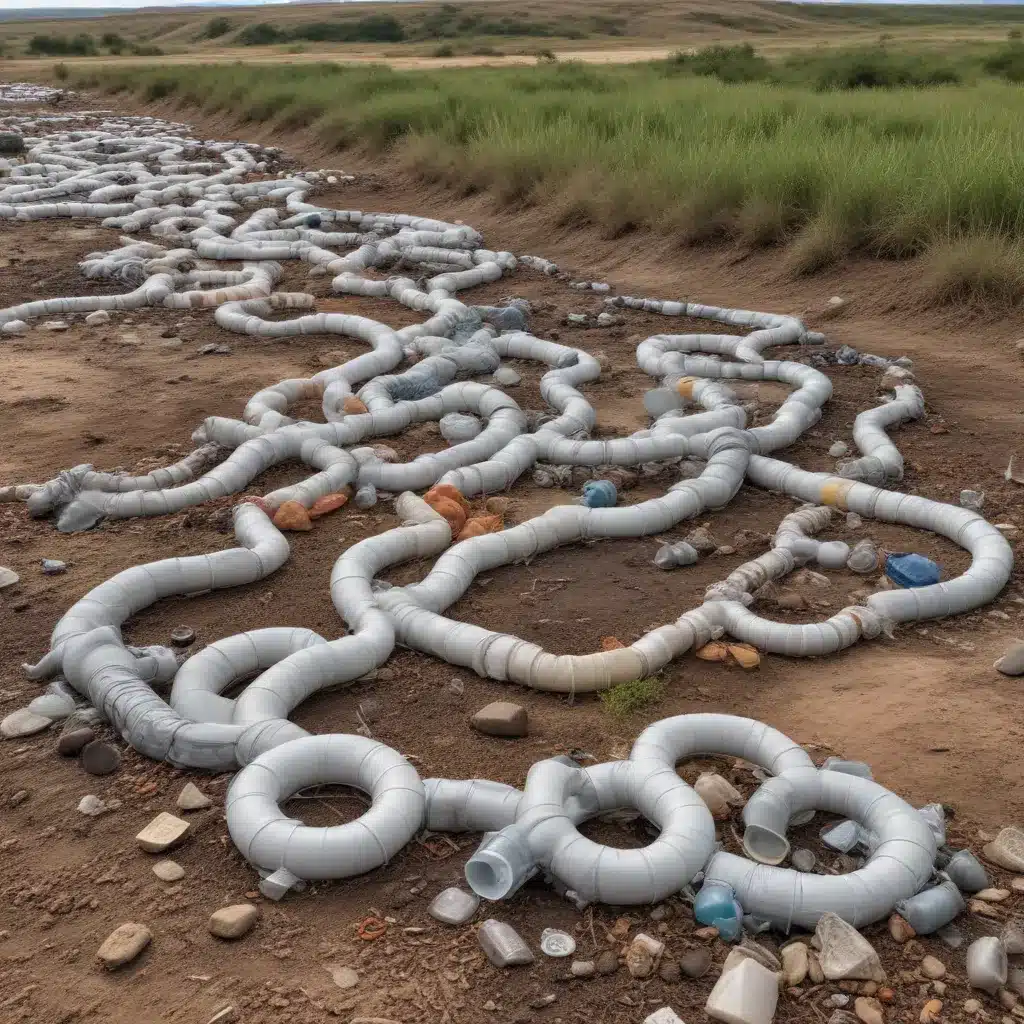
The Promise of Waste-Derived Hydrogen
Hydrogen has long been touted as a clean, efficient, and versatile energy carrier, with the potential to revolutionize our approach to sustainable development. However, the production of hydrogen has historically been plagued by high costs and reliance on fossil fuel-based sources. This is where the integration of thermochemical and biological conversion pathways offers a promising solution.
By harnessing the power of waste streams, researchers are unlocking new avenues for hydrogen production that are not only environmentally friendly but also economically viable. The National Renewable Energy Laboratory (NREL) has been at the forefront of this exploration, leading the charge in advancing the technologies that can transform our waste into a valuable energy resource.
Thermochemical Conversion: Unlocking High-Temperature Hydrogen
One of the key breakthroughs in waste-to-hydrogen production has been the development of thermochemical conversion processes. NREL’s High-Flux Solar Furnace reactor harnesses the power of concentrated solar energy to generate temperatures ranging from 1,000 to 2,000 degrees Celsius. These ultra-high temperatures are essential for the efficient execution of thermochemical reaction cycles that produce hydrogen.
“Very high reaction rates at these elevated temperatures give rise to very fast reaction rates, which significantly enhance production rates and more than compensate for the intermittent nature of the solar resource,” explains NREL researcher Judy Netter.
Researchers at NREL are also exploring the integration of thermochemical and biological pathways to maximize the efficiency and versatility of waste-to-hydrogen conversion. By combining the high-temperature, rapid conversion of thermochemical processes with the selective metabolic capabilities of microorganisms, they are unlocking new possibilities for sustainable hydrogen production.
Biological Conversion: Harnessing Microbial Ingenuity
While thermochemical methods offer impressive speed and scalability, biological conversion pathways bring a unique advantage – the ability to selectively target and convert specific waste components into hydrogen. NREL scientists are working to identify and optimize consortia of Clostridium bacteria that can directly ferment hemicellulose to hydrogen, bypassing the need for complex pretreatment steps.
“Other research areas involve bio-prospecting efficient cellulolytic microbes, such as Clostridium thermocellum, that can ferment crystalline cellulose directly to hydrogen to lower feedstock costs,” says NREL’s Katherine Chou.
By harnessing the innate capabilities of these microbes, researchers can develop streamlined biological conversion processes that minimize waste, reduce energy inputs, and maximize hydrogen yields. This approach holds the potential to unlock the full potential of waste streams as a sustainable source of hydrogen.
Integrating Thermochemical and Biological Pathways
The true power of waste-to-hydrogen production lies in the synergistic integration of thermochemical and biological conversion pathways. By leveraging the strengths of each approach, researchers can create a comprehensive, circular system that optimizes resource utilization and minimizes environmental impact.
NREL’s work in this area focuses on developing pretreatment technologies that can convert lignocellulosic biomass into sugar-rich feedstocks suitable for direct fermentation by microorganisms. This integration of thermochemical and biological processes not only enhances hydrogen production but also creates opportunities for the recovery of valuable co-products, such as high-value chemicals and biofuels.
“The integration of thermochemical and biochemical conversion processes facilitates the circular economy and improves resource usage,” explain the researchers from Amity University Uttar Pradesh in India. “Despite the wide range of feasible integration scenarios, the majority of research that is now accessible in the literature concentrates on the developments in thermochemical or biochemical processes as a standalone conversion pathway.”
By addressing this gap, NREL and its partners are paving the way for a more holistic and sustainable approach to waste-to-hydrogen production.
Advancing the Hydrogen Economy
The success of waste-to-hydrogen production lies not only in the technological breakthroughs but also in the ability to scale these solutions and integrate them into the broader hydrogen economy. NREL’s systems-level analyses and collaborations with industry partners are crucial in this regard.
“NREL performs systems-level analyses on a variety of sustainable hydrogen production and delivery pathways,” says NREL’s Genevieve Saur. “These efforts focus on determining status improvements resulting from technology advancements, cost as a function of production volume, and the potential for cost reductions.”
By identifying the key barriers and cost drivers, NREL can guide the strategic direction of research and development, ensuring that the most promising pathways are prioritized and brought to market.
Moreover, NREL’s leadership in initiatives like the HydroGEN Energy Materials Network and the Hydrogen From Next-generation Electrolyzers of Water (H2NEW) consortium underscores the collaborative nature of this endeavor. By bringing together researchers, industry experts, and policymakers, these initiatives are accelerating the adoption of sustainable hydrogen technologies and paving the way for a cleaner, more resilient energy future.
Conclusion: Unlocking the Potential of Waste
The integration of thermochemical and biological conversion pathways represents a transformative approach to waste-to-hydrogen production. By harnessing the complementary strengths of these technologies, researchers are unlocking new possibilities for sustainable energy generation, waste management, and environmental stewardship.
As the world pivots towards a hydrogen-powered future, the work of NREL and its partners serves as a beacon of hope, demonstrating that the solutions we need are within our grasp. By continuing to push the boundaries of innovation and fostering collaborative ecosystems, we can realize the full potential of waste as a valuable resource in the quest for a cleaner, more resilient energy landscape.
The Joint Action for Water blog is proud to share these advancements in waste-to-hydrogen production, inspiring our readers to join the movement towards a more sustainable and equitable future. Visit the Joint Action for Water website to explore more content on water, sanitation, and environmental solutions.

